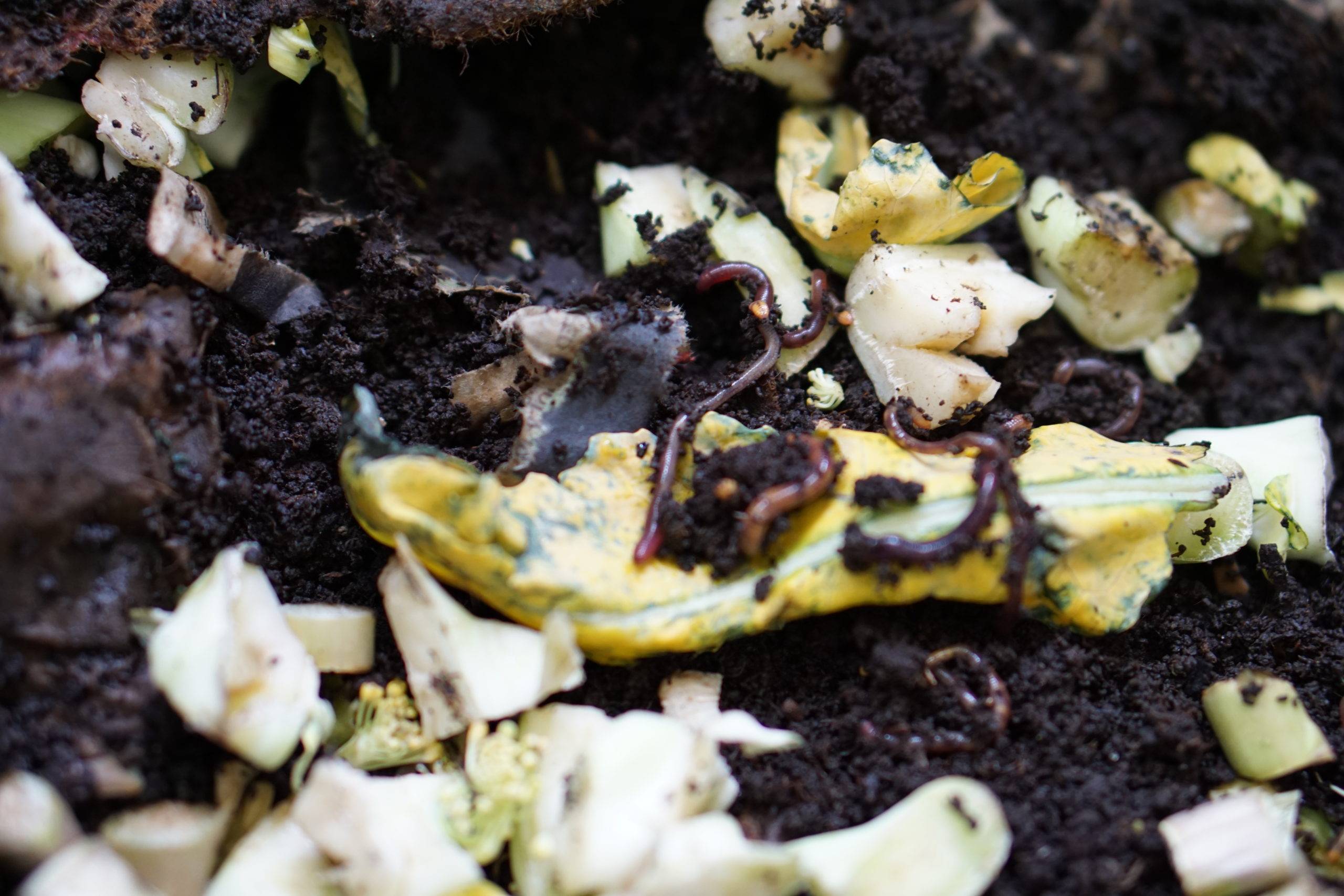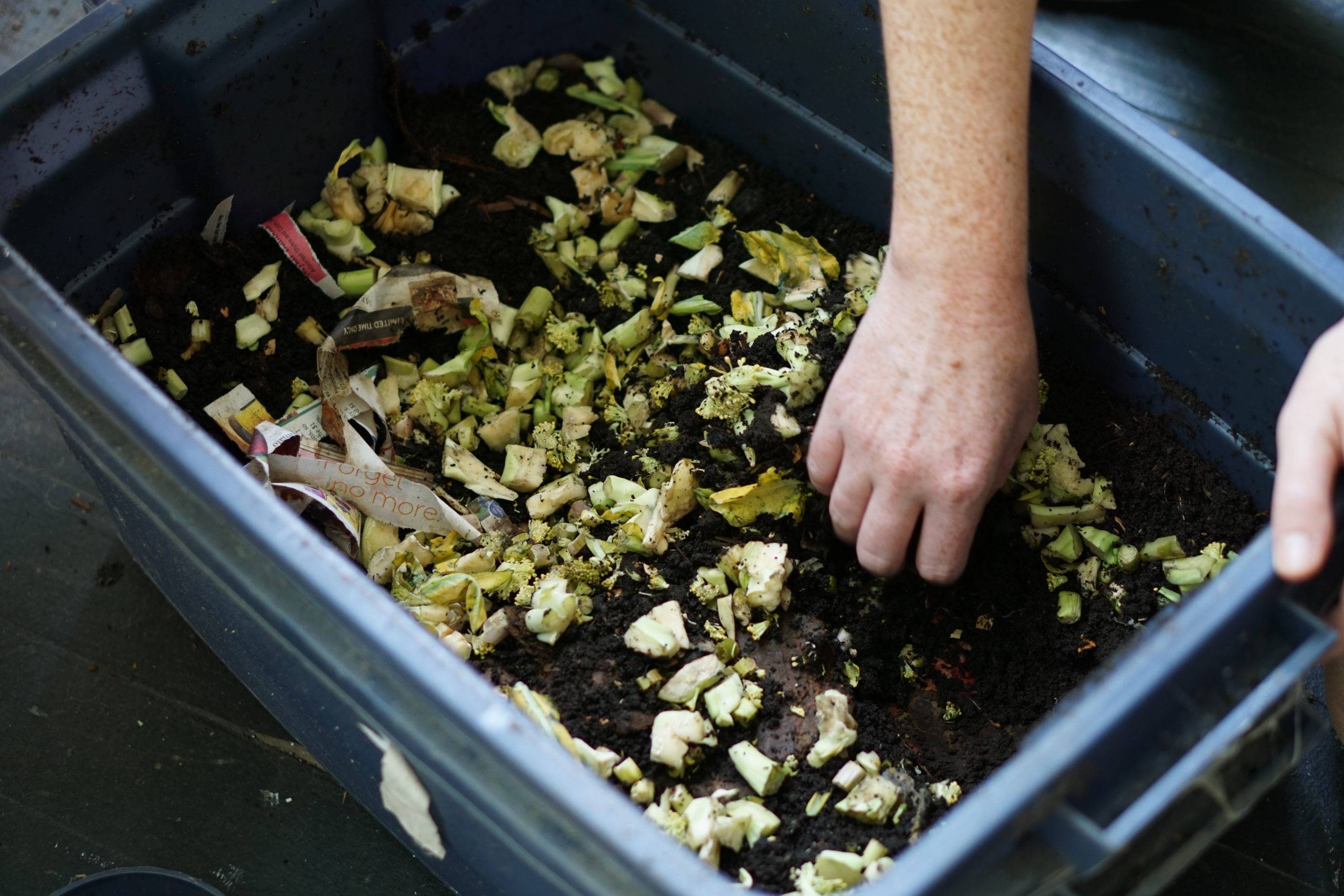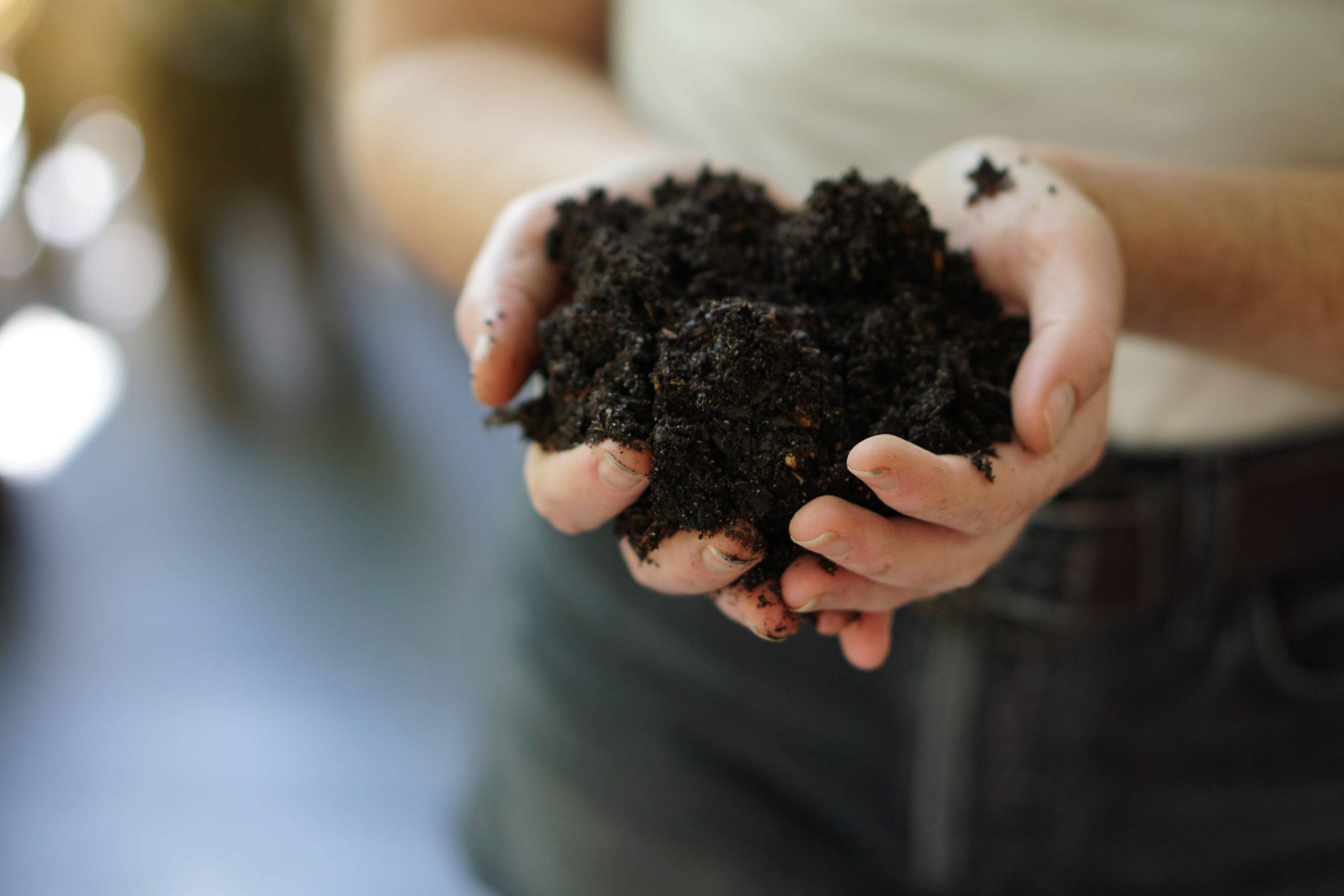Why Compost
As Charleston County continues to grow, the social, economic, and environmental impacts of excessive wastefulness are becoming increasingly evident. Local communities have the potential to contribute an enormous amount to our country’s carbon footprint, or on the contrary—the potential to reduce it. In the face of rising seas and a changing climate, we should be making every possible effort to reduce our carbon emissions and increase our resilience. One strategy that helps to achieve both is to increase traditional recycling and incorporate food waste composting into local waste management operations.
Food is the number one item Americans throw away. Every year up to 40% of the food supply in the U.S. is never consumed. Most of this wasted food ends up in the landfill. Organic waste such as food breaks down naturally in an open-air environment, but in a landfill without access to oxygen anaerobic decomposition occurs. Methane gas is produced as a result which is released into the atmosphere. Methane is a harmful greenhouse gas and a leading contributor to global climate change.
Community Composting for Climate Action
The City of Charleston Climate Action Plan was unanimously adopted by the Charleston City Council in May 2021. Guided by the results of a comprehensive greenhouse gas audit for the City of Charleston, the Climate Action Plan outlines a 5-year strategic framework to reduce the local production of heat-trapping gases from four different target areas: buildings, transportation, waste, and carbon sinks. The fifth component of the plan is education and community engagement, both of which are critical for raising awareness around social and environmental solutions to the climate crisis.
In January of 2022, the City of Charleston launched its Food Scrap Drop Off Pilot Program, which was an action item identified in the Climate Action Plan. City of Charleston residents can take their food scraps to designated drop sites for free as part of a pilot program aimed at keeping food waste out of the Bee’s Ferry Landfill. This program will divert the food waste from the drop sites to the Compost Facility at Bees Ferry where it will become nutrient-rich soil that will nourish our local landscapes and increase the health of our local food, water, and air.
To sign up for the service and to see a list of items accepted, residents must visit Charleston-sc.gov/compost. This is a pilot project for 6 months to test the logistics of a new program, and funding is limited. If the program is successful, Charleston City Council could then seek additional funding and consider expanding the program to new drop sites.

Backyard Composting
Those who have the backyard space and interest to compost at home have an opportunity to reduce emissions even further by cutting out the hauling aspect of commercial composting. Plus, composting at home allows you to reap the benefits of the compost you create by putting it to work in your own landscape! By starting a composting routine you are:
- Helping to grow food, not landfills
- Returning valuable nutrients back to the soil
- Reducing reliance on chemical fertilizers that pollute our environment and waterways
- Reducing heat-trapping gases from landfills (methane) that contribute to climate change
- Improving soil health and structure.
- Healthy soil increases water retention – or the ability for soils to absorb water, acting like a sponge
- This reduces the need for irrigation and helps to combat flooding
- Healthy soil increases water retention – or the ability for soils to absorb water, acting like a sponge
DIY Compost Pile/Bin
There are a number of different methods to create a successful backyard compost pile, such as creating an open-air compost pile in the back corner of your yard. By following a ratio of three parts browns (carbon material like leaves, straw, paper, sawdust) to one part greens (nitrogen material—food waste) you can maintain a healthy, functional, non-smelly pile of food waste covered with leaves. You will be amazed to watch how in just a few weeks’ time the material transforms into a nutrient-rich compost material that can be used to pot plants and amend your soils. The most common remedy to any issue an outdoor compost pile might face (such as odor or pests) is to simply add more leaves/brown carbon material to the pile.

Would you rather keep your compost contained in a tidy bin with a snap-on lid to prevent curious critters from investigating? You are not alone.
Follow the tips below for an easy DIY compost tumbler.
You’ll need:
- A plastic cylindrical bin (Brute, Rubbermaid, etc) with a snap-on lid, 35-55 gallons in size
- A power drill and a ¼” bit
- Shovel or sturdy stick to turn and aerate the pile
Follow these steps to get started:
1.) Drill 1/4″ holes around the sides and base of the bin (this allows for oxygen to flow)
2.) Create a small base layer on the bottom of the bin with sticks, shells, or rocks for drainage and aeration.
3.) Add a carbon layer (brown material) things like dried leaves work well. Also wood chips, sawdust, torn up newspaper, cardboard- dry, brown organic material to balance the wet, green food waste material.
4.) Add a nitrogen (green) layer of kitchen scraps (food waste). Fresh yard trimmings also work for the nitrogen component.
5.) Layer more dry brown carbon material on top. You want three parts carbon to one part nitrogen. A 3:1 brown to green ratio. More dry brown leaves than wet food waste.
6.) Snap on the lid to keep critters out.
7.) After a few days, turn the material to aerate it.
- With the lid on tight, you can gently lay your bin sideways on the ground and roll slowly back and forth to turn the material.
- You can also use a shovel, a large stick, or a broad fork to turn the material around in the bin and mix it up really well, pushing the food waste down and adding more brown carbon material on top
8.) You can store the food waste you are collecting in your kitchen in a paper bag and keep it in the freezer. This helps prevent odor and fruit flies that could occur if you store it in a countertop bin in the kitchen.
9.) When the bag is full, take it outside to empty it into your compost bin. Give it a good stir, and cover well with brown carbon material. Keep in mind that an active pile needs to be left alone long enough for the bacteria to heat up and expedite the decomposition process. If you are constantly turning or adding to the pile, this natural process does not have an opportunity to begin.
Your pile needs 4 ingredients to start working:
- Browns (carbon material)
- Greens (nitrogen material)
- Air (turn the pile and let oxygen flow throughout)
- Water (keep the pile moist, like a wet rag. In the humidity of South Carolina, this happens naturally)
When the food waste in your pile starts to rot, the fungi, bacteria, and invertebrates come in and start to break down and digest the organic matter. The material they leave behind are the nutrients that fertilize the soil.
What you can compost
As a general rule of thumb, if you can eat it, you can compost it. If it comes from the earth, it can go back to the earth.
That being said- certain materials break down more easily than others. So consider these tips when it’s time to compost any of the following:
- Meat
- Whole pieces of produce
- Dairy
- Processed foods
- Bones (helpful when crushed for faster decomposition)
- Seafood shells/bodies
- Large pieces of paper or cardboard
Cut the materials into small, manageable pieces before tossing them in your compost bin for more rapid and effective decomposition. Turn the pile and move these materials towards the heat at the center of the pile for faster decomposition. Crush bones with a mallet. Blend shellfish bodies in a processor. Maintaining a careful balance of carbon to nitrogen (3:1) will help offset odors that would occur from nitrogenous material left uncovered.
Troubleshooting Your Pile
Is your pile too dry? Too wet?
Do the crumble test: grab a handful of compost and give it a squeeze. It should crumble and have the dampness of a wrung-out sponge with no dripping or breaking into dust.
Is the food waste not breaking down after weeks? Is there an odor issue? These common issues can be mitigated with one of a few solutions:
- Add more carbon material like dried leaves
- Turn and aerate the pile
- Add water to the pile if it is too dry
Once the bin is full, stop adding food waste and let it cure. After a few weeks, a full bin should break down to about 3/4 full of finished compost. Check to ensure the material is no longer hot in the center, passes the crumble test, and smells like fresh wet earth.
Use the finished compost to amend your soil. Let it age an extra week or two before putting it around delicate plants or using it as a potting medium. Add to your garden beds or apply compost around the base of your trees for a nutritious boost.
Don’t have a garden or any potted plants? Consider reaching out to a local community garden or nonprofit group such as The Green Heart Project to see about donating your compost for use in their garden beds.
Don’t want to be bothered by tending to a backyard pile? You can sign up to have our friends at Compost Now do the dirty work for you and pick up your food waste from your doorstep every week.
Charleston County Compost
History
Charleston County has an award-winning compost facility which was designed to maximize space, allow for fast turnaround of organic material, and produce a high-quality value added finished product. Charleston County started composting yard waste in 1993 and banned yard waste from being sent to the landfill altogether in 2009. Shortly thereafter, the County enacted a yard waste plastic bag ban to protect the quality of the finished compost. In 2011, the Charleston County compost facility became the first commercial food waste composting program in the State to be permitted by DHEC. In 2013, the Charleston County compost program earned the US Composting Council’s seal of testing assurance since the finished compost consistently meets the high-quality standards of the program. Charleston County compost is certified usable for organic farming by Clemson University, and many local farmers rely on the superior finished product to grow their crops. Unfortunately, the demand far outweighs the supply.
Partnership with McGill
Charleston County has all of the existing infrastructure to expand the composting program but has been challenged to help the composting program grow and reach its highest potential since operations began in the 1990s.
In 2020, the Bee’s Ferry Compost Facility was privatized through a partnership with McGill Environmental Systems which are helping to take the program to a new level. McGill was awarded a 10-year contract to manage the Bees Ferry Compost facility. Over 80,000 tons of material are projected to be composted at the site on an annual basis. All compost products are certified under the US Composting Council’s Seal of Testing Assurance program. Since taking over operations in July 2020, the company has converted the Bee’s Ferry Compost Facility site from windrow to aerated static pile (ASP) composting. New equipment has also been added to improve the processing and quality of the finished compost product.
Schools, hotels, restaurants, and factories generate a huge amount of food waste every day that is sent to the landfill. Business owners have the option to contract with private haulers like SMART Recycling and Compost Now that collect food waste and transport it to Bee’s Ferry for processing.
Become a compost champion and encourage your friends and neighbors to start composting at their place of business and/or home.



